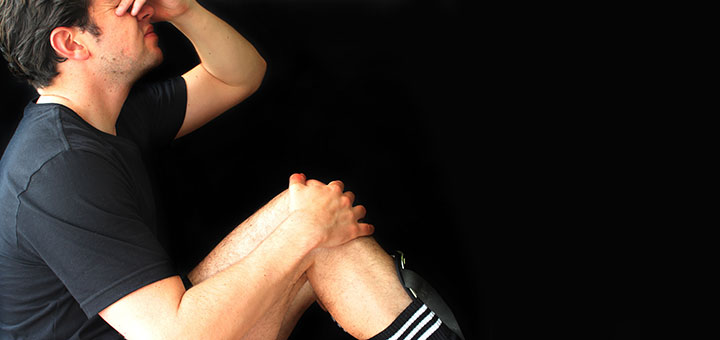Shin splints (or ‘medial and lateral tibial stress syndrome’ for those who like medical jargon) are very common in people who do vigorous exercise, particularly on hard surfaces. They can be incredibly painful but they are avoidable and they can be treated.
If, in the middle of an exercise class or when running, you’ve experienced sudden shooting pains from the front of your ankle up to below your kneecap and it feels sore to touch either side of your shinbone, then you may have shin splints.
The pain is caused by inflammation of the muscles in front of the shinbone (these muscles allow you to flex your foot upwards). They are sealed in a tough membrane so when swelling occurs the muscle can’t expand much and you experience pain and tenderness in that area.
Although very painful, shin splints isn’t a serious condition unless it progresses to cause tiny stress fractures in the shinbone. If shin splints reoccur or persist it is important to see your GP for treatment. Over the years I’ve treated many patients with shin splints and a common theme is over rolling (pronation) of the foot when in motion. Over rolling of the foot causes weakness, muscle spasms and over stretching of the muscle in front of the shinbone. All of this contributes to the inflammation and pain in this muscle or ‘shin splints’.
One successful way to treat shin splints is to wear custom made shoe inserts or orthotics in your everyday and your exercise shoes to stop you ‘over-rolling’ as you walk, run or exercise. Orthotics can improve your foot function, alleviate pain and prevent future problems. In addition to orthotics, you will benefit from tutoring by either one of our clinicians or our trusted lst of rehabilitation experts, on how to exercise safely and effectively.
Indeed, I’ve suffered from shin splints myself and have found that orthotics, and improved running technique plus a regular sports massage has kept the problem at bay.
As I initially mentioned, shin splints are avoidable if you take a few precautions. To reduce the impact of your exercise, choose to run, dance, aerobicise etc on surfaces that have give to them. Cement surfaces are particularly harsh so avoid these and choose surfaces such as grass, crushed gravel, tarmac or a dedicated running track. Running up or down hills can aggravate shin splints so to stick to flat surfaces. For exercise classes, a suspended wooden floor is ideal.
Wearing properly cushioned exercise shoes will also help to avoid the misery of shin splints. When shopping for trainers, look for a good fit (with at least a thumb’s width room at the toe, and the heel held firmly), good cushioning (especially in the forefoot, for an aerobics shoe), and extra supportive material on the inside heel-edge of the sole.
I would suggest that you only buy from a dedicated sports shop that has trained assistants who can advise you on the most appropriate footwear. Getting a cheap pair of supermarket trainers really is a false economy. Just as it would be dangerous to drive your car with bald tyres, you shouldn’t use worn out trainers. Runners and walkers should replace their shoes approximately every 500 miles; aerobicisers every four to five months.
Always warm up before exercising to get blood flowing to the tissues. Warm muscles are less likely than cold muscles to be injured. Warm up with a few minutes of easy walking or gentle stretching.
If you do get shin splints, the most important message is that you should stop exercising. Continuing to exercise could cause minute stress fractures in your shinbone. Take it easy for a couple of days and seek the advice of your chiropractically trained health care provider or GP.
As a qualified extremity practitioner, I tape patients’ shins up to alleviate the pressure. As a home solution, some patients have reported that it is comforting to wear an elastic bandage to compress the inflammation slightly.
Use an icepack or a pack of frozen peas wrapped in a towel to reduce the inflammation of the muscle. Be careful to only apply the ice for 20 minutes at a time and do not reapply until the skin has returned to its normal temperature.
Listen to your body. When you exercise be conscious of how you are using your feet, focus on feeling how your muscles move. Pain and restricted movement in joints are warning signs that if ignored in the short term, you will regret at leisure later.

